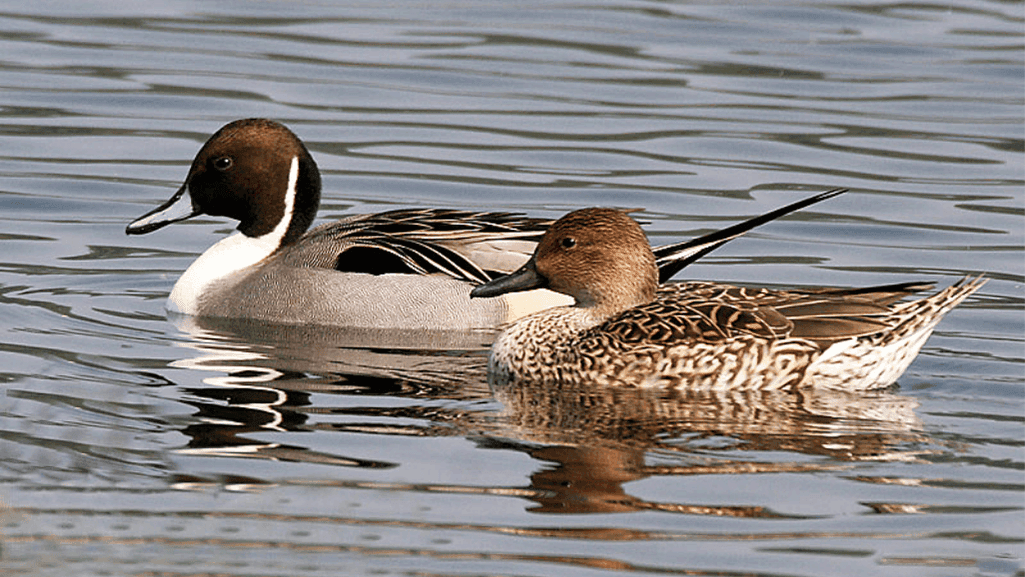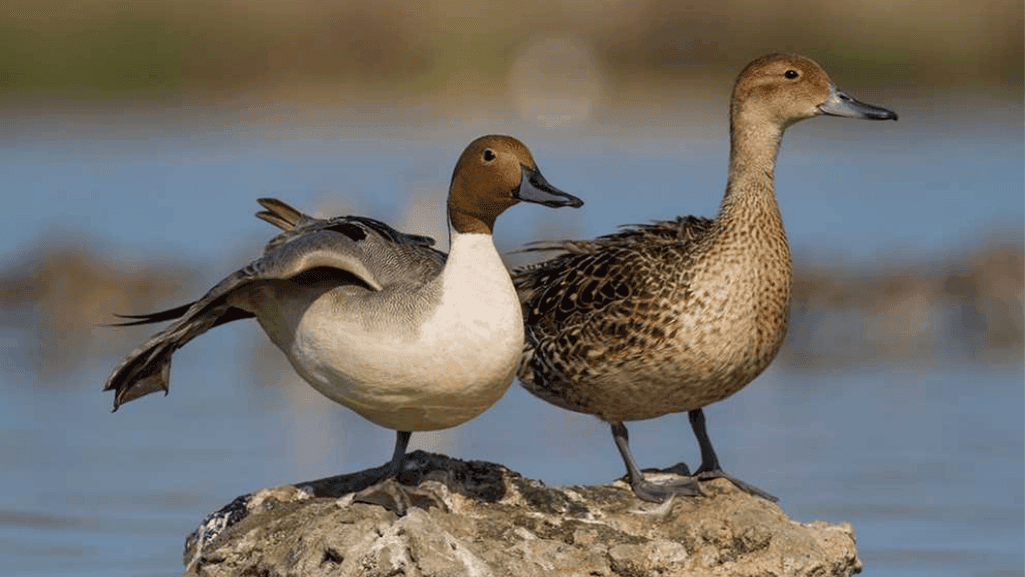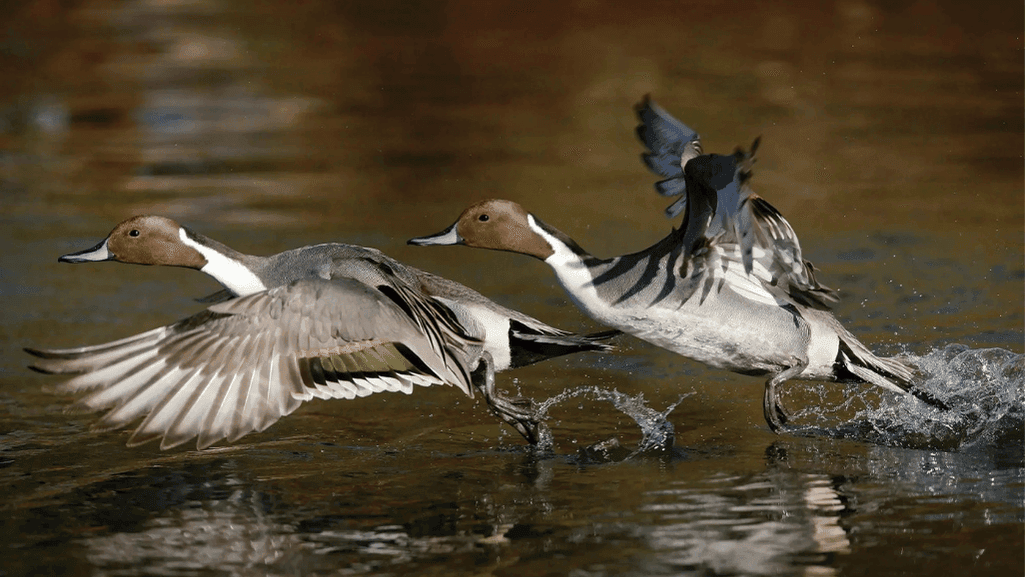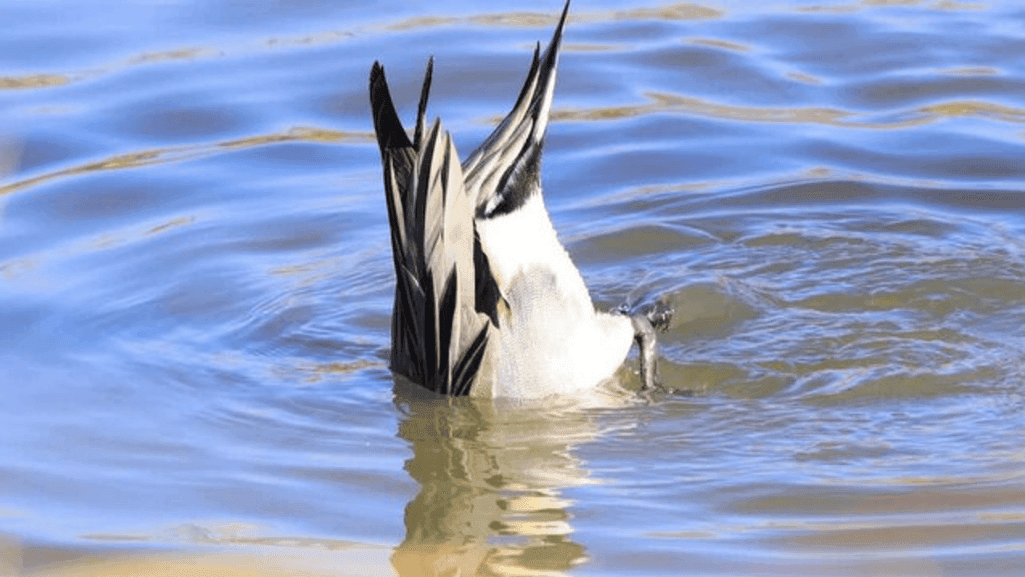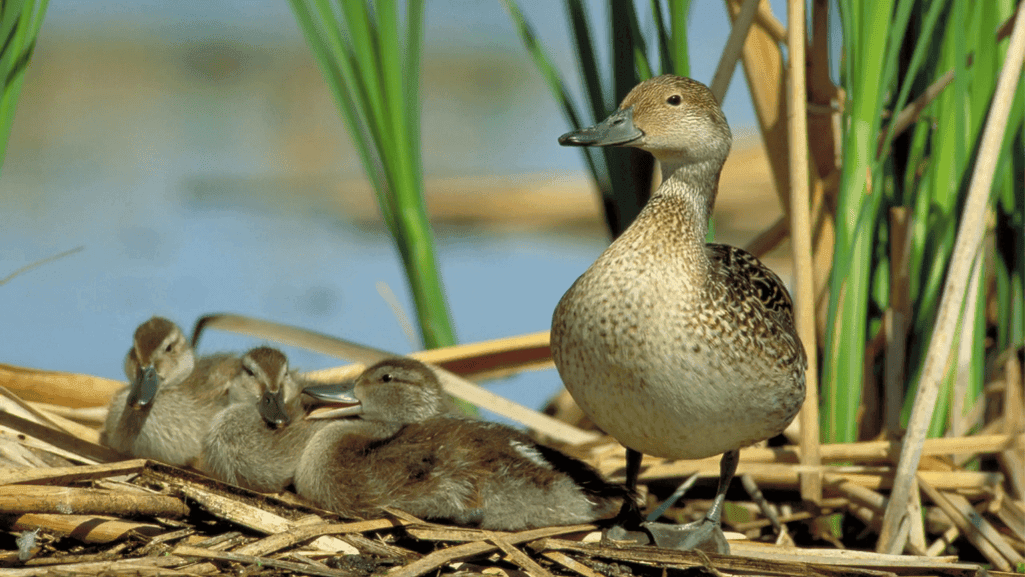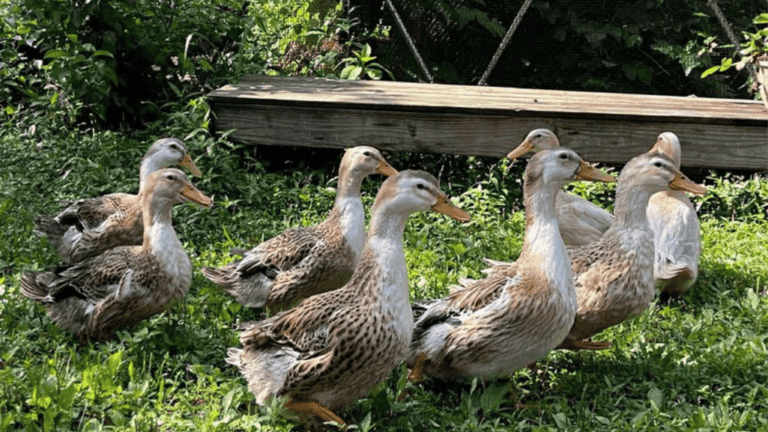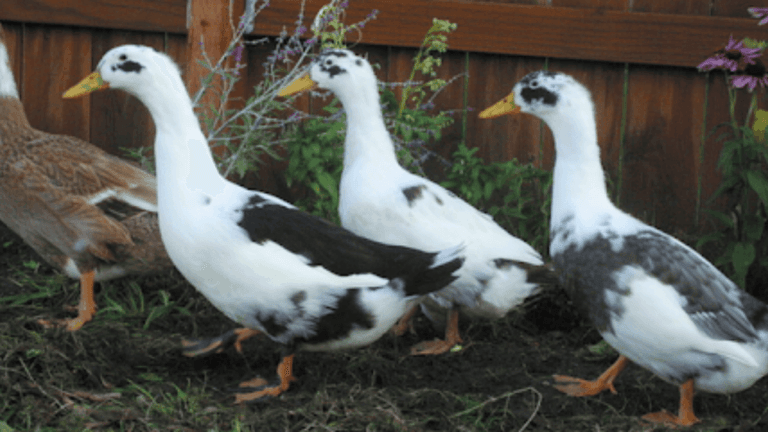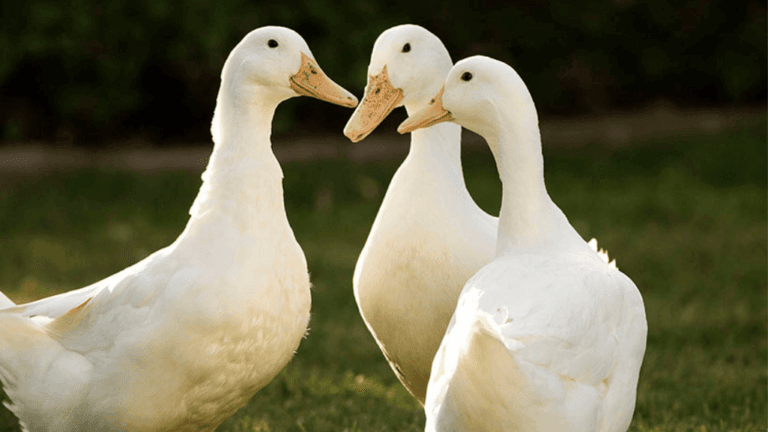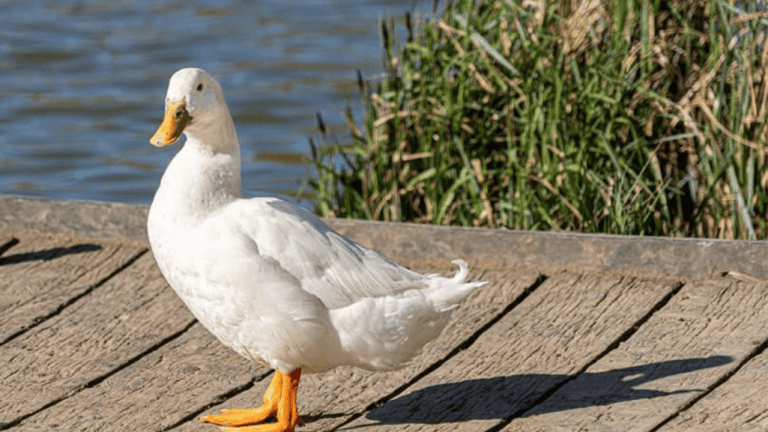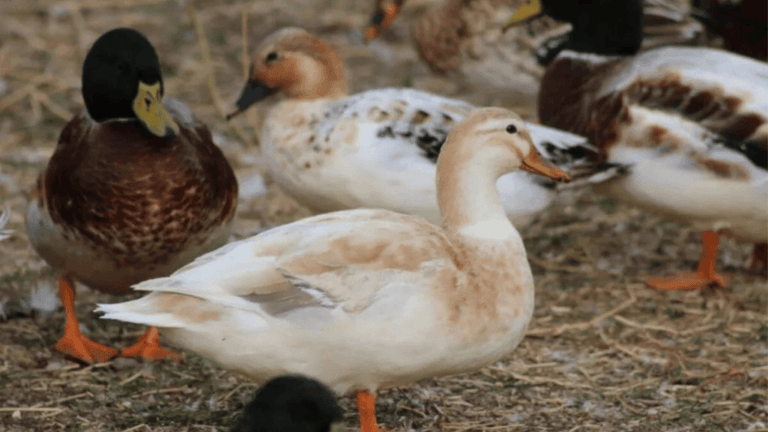Northern Pintail Ducks (Anas acuta) are known for their elegance and wide range. They are loved by bird watchers and hunters for their unique look and grace. The George C. Reifel Migratory Bird Sanctuary in British Columbia is a great place to see them in their natural habitat.
These ducks have long necks, long tail feathers, and beautiful colors. They can be found in many places in North America and beyond. They live in different types of freshwater areas. Let’s learn more about these beautiful birds and why we need to protect their homes.
Key Takeaways:
- Northern Pintail Ducks are known for their elegant appearance and long, pointed tail feathers.
- These waterfowl have a widespread distribution and prefer freshwater marshes and wetlands.
- The George C. Reifel Migratory Bird Sanctuary in British Columbia provides excellent habitat for observing Northern Pintail Ducks.
- Wetland conservation is crucial for the survival and well-being of Northern Pintail Ducks and other waterfowl species.
- Exploring the unique characteristics and behaviors of Northern Pintail Ducks enhances our appreciation for these graceful birds.
Introduction to Northern Pintail Ducks
Get ready to be amazed by the Northern Pintail Ducks. They are a stunning waterfowl species known for their grace and beauty. As dabbling ducks, they have won the hearts of many nature lovers and bird watchers.
Northern Pintail Ducks travel far and wide. They can be found in North America, Europe, northern Africa, and southern Asia. In the U.S., they live in many places, from Alaska’s wetlands to the Great Lakes and New England’s landscapes.
What makes Northern Pintails special is how they like to be together. Outside of breeding season, they gather in big groups with other ducks. This creates a beautiful sight of feathered friends. It also shows how important it is to protect their wetland homes.
Exploring Northern Pintail Ducks will inspire you. They are resilient and play a key role in wetland ecosystems. Thanks to groups like Ducks New World, we can help these amazing ducks thrive for future generations.
Physical Characteristics of Northern Pintail Ducks
Northern Pintail Ducks are known for their elegance and striking looks. They have slender bodies and move gracefully. This makes them a joy to watch on land and in the water.
Distinctive Long, Pointed Tail Feathers
One key feature of Northern Pintail Ducks is their long, pointed tail feathers. These can reach up to 7 inches long. They give the ducks a sleek look and are more noticeable in males.
Striking Plumage Patterns
The plumage of Northern Pintail Ducks is striking, with different patterns for males and females. Males have a chocolate-brown head, white neck, and breast. Their back and sides have intricate patterns.
In flight, the male’s grayish-brown wings show a vibrant green speculum. This adds to their beauty.
Females are less showy but still beautiful. They have mottled brown plumage that helps them blend into their wetland habitats. Their bill is blue-gray, and their wing speculum is lighter than the male’s.
Sexual Dimorphism in Appearance
Sexual dimorphism is clear in Northern Pintail Ducks. Males are larger than females, with an average length of 21 to 29 inches. They have a wingspan of about 3 feet.
Despite being longer, males weigh about 20% less than mallards. The plumage differences between males and females are striking. These differences help in identifying them and play a role in courtship and mate selection.
Habitat and Range of Northern Pintail Ducks
Northern Pintail Ducks are found in many places, including North America, Europe, and Asia. They live in different wetland areas, like shallow marshes and coastal estuaries. Their ability to adapt to various habitats makes them easy to spot for bird lovers.
Widespread Distribution Across North America
In North America, you can find Northern Pintail Ducks from Alaska to the Great Plains. They are common in Quebec and along the west coast. In the summer, they nest in the Arctic tundra near wetlands and ponds.
When it’s not breeding season, they migrate to warmer places. They go to the southern United States, Central America, and the Caribbean. The Fraser River estuary in British Columbia is a key stop for them during migration.
Other important places for wintering include the Gulf Coast, California’s Central Valley, and the Playa Lakes Region. These areas offer food and shelter for the ducks during their travels.
Preference for Freshwater Marshes and Wetlands
Northern Pintail Ducks love shallow freshwater marshes and wetlands, especially in the summer. These places have lots of plants and small animals for them to eat. They prefer water that’s less than 18 inches deep, so they can easily find food on the bottom.
They also visit agricultural lands like flooded rice fields and irrigated croplands. These areas have waste grains and small animals that are good for them. This helps them during migration and winter.
It’s important to protect and restore the wetlands that Northern Pintail Ducks depend on. Keeping these habitats healthy helps ensure that pintails and other wetland birds can continue to thrive.
Migration Patterns and Wintering Grounds
Northern Pintail Ducks are known for their amazing migrations. They travel long distances across continents to find good habitats. These birds show incredible endurance and skill in finding their way.
They have been tracked from 22 countries across 3 continents. This shows how important they are globally.
The Pacific Coast of North America is key for their migration and wintering. Over half of the North American population, about 3.2 million birds, migrate through California. The Reifel Sanctuary is crucial for these birds during migration and winter.
In winter, most Northern Pintails go to the Central Valley of California. This area has lots of wetlands and fields, perfect for food and shelter. But, their breeding numbers have dropped since the 1950s, leading to conservation efforts.
In the Central Flyway, they winter in the Texas Panhandle, Gulf Coast of Texas, and western Louisiana. These places have shallow wetlands, marshes, and fields for their food. In the Mississippi Flyway, they find homes in Louisiana, Arkansas, Tennessee, Mississippi, and Alabama.
They also visit Central America, the Caribbean, and northern Colombia in winter. These places are vital for their survival, showing the need for international conservation efforts.
The North American Waterfowl Management Plan aims to grow the Northern Pintail population to 5.5 million. This goal needs teamwork from conservationists, wildlife managers, and the public. Protecting wetlands is key to their success.
Northern Pintail Ducks’ Diet and Feeding Habits
Northern Pintail Ducks are known for their elegance and grace. They have unique feeding habits that make them stand out. As dabbling ducks, they use their long necks to find food in shallow waters.
Their diet is diverse and adaptable. This allows them to thrive in different habitats across their wide range.
Dabbling for Aquatic Plants and Invertebrates
The Northern Pintail’s main way of eating is dabbling. They submerge their heads and upper bodies in water. This lets them get to plants, roots, and invertebrates that other ducks can’t.
Pintails eat a variety of foods. This includes grains, seeds, insects, and aquatic plants. Some common foods in their diet are:
- Pondweeds
- Widgeon grass
- Smartweeds
- Muskgrass
- Sedges
- Snails
- Aquatic insects
- Water bugs
Adapting to Various Food Sources
Northern Pintail Ducks are very adaptable in their eating habits. During breeding season, they eat more invertebrates. This is because they need more protein for eggs and chicks.
In agricultural areas, they also eat waste grains. This includes wheat, barley, and rice. They are often seen in fields during migration and winter.
Being able to change their diet is key to the Northern Pintail’s success. They can find food in many different places. From marshes to flooded rice fields, they show great resilience and adaptability.
Breeding Biology and Nesting
Northern Pintail Ducks start breeding early, unlike many other ducks. They nest from April to June in their northern homes. Most of them live in the Prairie Pothole Region of Alberta, Saskatchewan, and the Dakotas. This area is perfect for raising their young.
Early Breeders Among Duck Species
Northern Pintail Ducks are among the first to breed in North America. They nest in places like Alaska’s Arctic tundra and northern Canada. They also breed in the Dakotas and northern Montana.
In the 1987-1992 field work seasons, researchers found many breeding sites for Northern Pintails. Most were on the High Plains in the region.
Nesting Habits and Habitat Requirements
Female Northern Pintails lay about 7 eggs, sometimes as few as 3 or as many as 12. The eggs are hard to tell apart from those of Mallards or Northern Shovelers. In Colorado, most young Northern Pintails were found at lakes.
Northern Pintails need specific habitats to nest. Changes in wetlands can affect their breeding. They prefer smaller, shallower ponds for nesting.
Low nest success is a big problem for Northern Pintails. They need fat reserves to breed on the tundra. About 80 to 85 percent of pintail hens go to northeastern California and southern Oregon to build up these reserves.
Conservation Status and Threats to Northern Pintail Ducks
Northern Pintail Ducks were once very common. But, their numbers have dropped a lot in recent years. In the 1950s, there were about 10 million in the US. By 1991, this number fell to just 1.8 million.
Today, there are about 1.78 million Northern Pintail Ducks. This is less than the goal set by the North American Waterfowl Management Plan of 5.5 million.
The number of Northern Pintail Ducks has dropped by 54% from the long-term average. In Canada, research shows that many pintails nest in fields. But, most of these nests fail because of predators and human disturbance.
Habitat loss is a big problem for Northern Pintail Ducks. In the 1970s, farmers left some fields unplowed. This helped pintails nest safely. But, now all fields are seeded, losing 25 million acres of nesting ground.
Conservationists are working to protect these nesting areas. They want to keep the fields safe from farm equipment in spring. This is crucial for the pintail population.
California’s water crisis also affects pintails. This problem will likely get worse. It shows the need for a wide conservation plan.
A study started in 2022 to learn more about Northern Pintail Ducks. Led by Aaron Pearse and Dan Collins, it will study their habitat use. This will help in protecting their habitats and managing hunting.
Supporting groups like Ducks New World can help. They work to protect wetlands. By raising awareness and supporting research, we can help these beautiful ducks.
The Importance of Wetland Conservation for Northern Pintail Ducks
Wetland conservation is key for Northern Pintail Ducks. These ducks need wetlands for breeding, migration, and wintering. Saving and restoring wetlands is vital for their survival.
Key Wetland Habitats for Pintails
Northern Pintail Ducks live in many wetlands across North America, Europe, and Asia. The Canadian Prairie Pothole Region is a major breeding spot. It has shallow wetlands and grasslands.
The Central Valley of California is also crucial. Up to 35% of North America’s pintails winter there. The Gulf Coast of Texas and Louisiana hosts about 25% of the continent’s wintering pintails. These places offer vital food sources, like flooded rice fields.
Threats to Wetland Ecosystems
Wetlands face many threats, harming Northern Pintail Ducks and other species. Habitat loss from agriculture, urban growth, and energy projects is a big problem. In the Canadian Prairie Pothole Region, about 9% of wetlands were lost to farming between 1985 and 2010.
Drought, lead poisoning, and pesticides also harm pintails. To protect these ducks, we must save and restore wetlands. We need to manage them wisely too.


